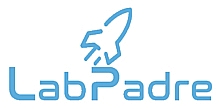
Adapt to survive
2 Responses to “Adapt to survive”
Have your say - submit a comment
THE SMALL(ish) PRINT... (updated 23/07/2016)
By submitting a comment to this blog you grant me permission to reproduce its content and to reproduce the submitted name/URL in attribution. I will leave your content in its intended place and in its unedited form unless one or more of the following apply:
If you ask me to modify, move or delete your content, I’ll consider making the requested change(s) so long as there’s no significant alteration of the context of the content or of any debate associated with it;
If you change your email address or URL, I’ll update these details in older comments so that I'm not displaying dead links;
If I decide to change the theme or layout of this blog, thus affecting the placement and/or visibility of comments, I’ll make whatever changes I see fit for the smooth running of this blog;
If any comment contains insulting profanity or other content which I deem to be causing or likely to cause trouble, I’ll edit or delete as I see fit for the smooth running of this blog. I’ll try to remember to display the reason(s) for whatever editing I do, so that folk aren’t left hanging wondering what happened and why. If you can at least try to "disguise" your swearing, it would be much appreciated.
Other things to consider:
Comments must contain at least 3 characters;
You can use some code in comments, feel free to give it a shot and see what works;
If adding pics, the recommended maximum dimension is 600px.;
Comments containing many links will be held for moderation;
I reserve the right to amend this policy in line with proven applicable current legislation;
Free Speech: you may well have the right to it, but you've no right to compel me to a) listen to it, or b) publish it!














Tell me about it!.
When I was trying to fit an LPR filter to my C8 I thought it ought to fit, I didn't know about the imperial/metric differences - I literally took the skin off my hand in the attempt to screw it on.
[quote comment="1068"]Tell me about it!.
When I was trying to fit an LPR filter to my C8 I thought it ought to fit, I didn't know about the imperial/metric differences - I literally took the skin off my hand in the attempt to screw it on.[/quote]
Ouch! Rather you than me 🙂